Which Of The Following Is Not A Principal Issue In Service-encounter Design? Quizlet

Critical Issues in Transportation 2019
Policy Snapshot


INTRODUCTION
Driverless cars maneuvering through city streets. Commercial drones airlifting packages. Calculator-captained ships navigating the loftier seas. Revolutionary changes in engineering are taking united states to the threshold of a assuming and unprecedented era in transportation.
These technologies promise improvements in mobility, safe, efficiency, and convenience, but do not guarantee them. Volition the technological revolution reduce congestion, fuel use, and pollution or make them worse by encouraging more personal trips and more frequent freight shipments?
The transportation sector also faces other unprecedented challenges. It needs to (1) sharply curb greenhouse gas emissions to slow the rate of climatic change and (2) reply to more climate-related farthermost weather. It must serve a growing population and cope with worsening highway congestion. Information technology needs to maintain and upgrade a massive organisation of roads, bridges, ports, waterways, airports, and public transit and determine how to pay for those improvements. The transportation sector also needs to conform to shifts in trade, free energy, and funding sources that touch on all modes of transportation. How will these challenges affect the transportation systems on which consumers and the economy depend?
The answers to these and other questions are critically important. Transportation plays a key role in society and the economy only is frequently taken for granted. Reflect, though, on how much you depend on reliable and affordable transportation to admission piece of work, friends and family, recreation, shopping, and worship. So visualize the transportation networks needed for the daily movement of hundreds of millions of vehicles, ships, planes, and trains to satisfy both personal needs and commercial demands. These networks are enormous and complex. The transportation systems the economy and lifestyles rely on may exist challenged dramatically in the coming decades in ways that cannot always be predictable.
A national chat amidst policy makers and citizens near how the country should respond to these challenges is urgently needed. Stakeholders demand to debate, discuss, and analyze how transportation tin evolve to run across growing and evolving needs and adapt to changes in society, engineering, the environment, and public policy.

To spur that conversation, the Transportation Research Board (TRB) identified and organized an array of important issues under 12 primal topics. In each of these areas, TRB posed a series of crucial questions to help guide thinking, debate, and discovery during the next 5 to x years. These 12 topics are neither comprehensive nor mutually sectional, and no i tin know how the future will unfold. Only TRB thinks that asking the right questions, even if they cannot exist fully answered, helps to motivate the assay, give-and-take, and contend required to ready for the potentially unprecedented changes ahead.
This document is an abbreviated version of a more thorough discussion of the critical issues in transportation. It tin can be accessed at https://world wide web.nap.edu/download/25314.

Transformational Technologies and Services: Steering the Technology Revolution
All around the earth, companies are testing automated cars, trucks, ships, and shipping. Pilot vehicles are already in operation. Some products are nearly sure to enter the market place in the adjacent few years. Driverless vehicles equipped with artificial intelligence may revolutionize transportation. Mayhap even sooner, vehicles connected to one another with advanced high-speed communication technologies may greatly reduce crashes
How will vehicle automation—along with connected vehicles and shared ride, motorcar, bicycle, and scooter services—transform society? These revolutionary technologies and services can potentially speed deliveries, prevent crashes, and ease traffic congestion and pollution. But they could also crusade more than congestion and more pollution and exacerbate sprawl and inequity. How do we decide and guide, every bit necessary, the direction of these changes?
How the future unfolds depends on which technologies and services consumers and businesses embrace and how policy makers respond. While we do not know what the hereafter will bring, the changes could be momentous. For example, if we encourage people to pool rides in driverless electric cars, nosotros could run across the service, toll, and surroundings improve. What policies would best reduce traffic congestion and emissions and improve accessibility for the disabled, elderly, and economically disadvantaged? How do we do good most from the advent of connected and automated vehicles and potentially transformative transportation services?.

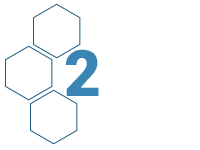
Serving a Growing and Shifting Population
The U.South. population is expected to abound about 1 percent annually, with highway use increasing similarly. But this growth will not be spread evenly beyond the state. Urban areas are growing more quickly, peculiarly clusters of metro areas known as "megaregions," while many rural areas decline.
At the same time, low-density residential evolution on the edges of urban areas continues to abound the fastest, which increases traffic and escalates emissions. Although many Millennials are settling in urban centers, more are locating on the edges of cities where Baby Boomers also prefer to live. How do we adjust to and guide travel demand so nosotros are not overwhelmed with more roads, traffic, and emissions equally a consequence of these geographic preferences?
Megaregions in the Northeast, Midwest, Due south, and West take emerged equally economic engines for the economic system, but they also have the worst traffic congestion. And their traffic volumes keep to grow faster than new transportation facilities can be congenital. What are the best policies and modes for improving travel inside each megaregion? How do nosotros ensure that megaregions are well connected to the residue of the nation and the globe? How can rural populations exist ensured acceptable admission to jobs and services? How is that access irresolute? Which policies are needed to provide adequate rural admission?


Energy and Sustainability: Protecting the Planet
The Earth's changing climate poses one of the most important threats humanity has ever faced. To avoid catastrophic changes, all sectors of the economic system need to make desperate cuts in greenhouse gas emissions. Vehicles, planes, ships, and other forms of ship emit more than greenhouse gases than any other sector of the economy in the United States. And that share is growing because other sectors of the economy are reducing their emissions faster than transportation.
Personal vehicles could rely on electrification using batteries or hydrogen as 1 way to significantly reduce greenhouse gas emissions. Planes, ships, and trucks pose major obstacles to this objective because of their dependence on fossil fuels that pack more power than alternatives. What are the most effective and cost-constructive means of achieving the drastic reductions needed in fossil fuel consumption? What are the appropriate roles for the public and private sectors in hastening this transition? How tin can the shift to electric vehicles be achieved without overwhelming the power grid?
Sustainability requires that there be long-term consideration of the implications of decisions and policies on social, economic, and environmental systems. Examples include making decisions based on life-bicycle cost considerations and the long-term vitality of communities and key natural environmental systems. How can consideration of long-term sustainability goals be improve incorporated into public policy debates and decisions virtually transportation?

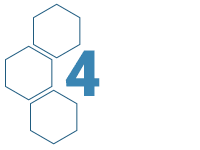
Resilience and Security: Preparing for Threats
Recent floods, storms, fires, and hurricanes have disrupted the lives of millions and caused hundreds of billions of dollars in harm. Extreme weather events are exacerbated by climate change, and scientists predict things volition get worse. Extreme conditions and other natural disasters pose huge and plush threats to the transportation infrastructure.
Public officials face up the claiming of making vulnerable highways, bridges, railroads, transit stations, waterways, airports, and ports more resilient to climatic change and other threats. What policies and strategies would help them meet this challenge? How practise we set priorities, cope with disruptions, and pay for these adaptations?
Terrorists ofttimes choose transportation facilities equally their targets. Airports and airlines have increased security to guard against terrorism, simply other modes of transport— buses, trains, and ships—are more vulnerable. How do we protect these forms of transport without unduly slowing the motility of people and goods?
We also need to address the risks of new technologies. Drones, for example, can be used past terrorists or drug smugglers. Automated vehicles and aircraft are vulnerable to hackers. And all types of transport depend on Global Positioning Systems (GPSs), for which at that place is no dorsum-up system. How practise we brand technological advances more secure and resilient?

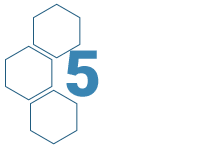
Rubber and Public Health: Safeguarding the Public
We depend on motorized transportation, merely we pay a cost with our health with deaths, injuries, and diseases. Routine highway travel is the source of the vast bulk of transportrelated deaths and a significant portion of transport-related pollution in the United States. Even though there take been improvements in vehicles and facilities, most crashes are preventable. How do nosotros muster the political volition to prefer the almost effective measures to reduce casualties and diseases caused past transportation?
How exercise we encourage the use of the safest vehicle and route designs, reduce booze- and drug-impaired driving, and manage operator fatigue? As well, how do we curb driver distractions, especially in semi-automated vehicles that do not require total attention except in emergencies when multitasking drivers may be unprepared to reply?
Marijuana legalization and opioid addiction may lead to more people driving while impaired. In addition, pedestrian and cyclist deaths are increasing. What can nosotros practice to address these problems? What successes from other countries can be applied?
Air pollution comes from many sources, but some transport emissions, such as the particulates from burning diesel fuel, are especially harmful to people. People living near roads, ports, distribution centers, railyards, and airports—often the marginalized and the poor—are exposed to more of these types of vehicle emissions. How do we best address these issues?


Equity: Serving the Disadvantaged
The United States is prosperous, but non uniformly. More than than 40 one thousand thousand Americans alive in poverty. Exterior central cities, an car is essential for admission to jobs and a slice of the American dream, but about 20 pct of households with incomes below $25,000 lack a automobile.
In addition, about forty meg Americans have some form of disability, of whom more than xvi 1000000 are working historic period. And the population is aging: the number of people older than 65 volition increase by 50 percent from 49 1000000 now to 73 million by 2030.
Access to jobs, wellness care, and other services can be expanded through transportation policies and programs and engineering, simply these approaches need to be affordable and effective. This is a particular challenge in sparsely populated areas.
How practise nosotros assist disadvantaged Americans become affordable access to work, health intendance, and other services and to family unit and friends? What policies would ensure that new technologies and services do not create new barriers to the disadvantaged or to rural residents? Also, as we aggrandize transportation networks, how practise nosotros ensure that we are non harming low-income and minority neighborhoods?

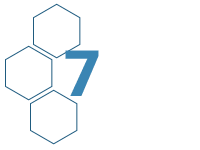
Governance: Managing Our Systems
A complex web of institutions manages America's transportation services. Many levels of authorities, from local to national, play important roles. Some functions, such as public transit, airports, and ports, are managed by thousands of special authorities beyond the state.
This spider spider web of governance frequently limits efficiency. For case, urban ship networks ofttimes span jurisdictional boundaries, creating disagreement about which agency is responsible for which aspects of planning, funding, and management. Separate funding streams for specific transportation modes impede efforts to provide travelers with multi-modal options. How do we address these challenges, specially every bit urban areas abound into megaregions?
The federal regime is responsible for interstate waterways and airspaces and for interstate commerce. Nonetheless, federal leadership and funding for transportation supporting interstate commerce are waning, forcing state and local governments to accept on a larger office. How do we ensure that there are efficient networks for interstate travel and international trade every bit the federal part declines?
New individual transportation services efficiently generate enormous data sets well-nigh trips. Such data can be helpful to agencies trying to manage system performance. Connected and automated vehicles will add even more information. How can public agencies proceeds access to these data streams to improve traffic menstruation while protecting privacy and proprietary data?


Organisation Performance and Management: Improving the Performance of Transportation Networks
Highway congestion costs the nation every bit much every bit $300 billion annually in wasted time. Flight delays add at to the lowest degree another $30 billion. Clearly, demand for travel is outpacing growth in supply and the increasing congestion is costing us dearly.
As the population grows, demand volition merely increase. Notwithstanding, expanding or building new roads, airports, and other facilities in urban areas is plush, time consuming, and oftentimes controversial. How can we serve growing demand in a financially, socially, and environmentally responsible style?
Transportation officials also need to clasp more than performance out of the existing networks. I style to exercise this is past managing demand: Charging drivers for peakperiod travel in congested areas, for example, has the potential to increase ride sharing and generate revenues for transit, bicycle paths, and sidewalks. While pricing is more than effective than other approaches, it is also unpopular. How practise nosotros build public and political credence for demand direction strategies that work?
In the confront of tight budgets, transportation officials must also effigy out how to maintain the condition of roads, bridges, airports, and other assets for every bit long as possible. What research would help increase the immovability of structure materials and designs? How practise we speed adoption of new information to improve the life-cycle performance of transportation avails?

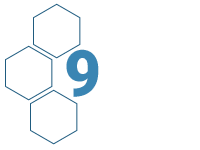
Funding and Finance: Paying the Tab
Fuel taxes and other user fees have traditionally paid for highways, bridges, airports, ports, and public transit. These user fees are by and large fair and efficient means to pay for the transportation infrastructure, which is valued in trillions of dollars. All the same, improving fuel efficiency undermines the acquirement potential from the motor fuel taxes that have been the primary funding source for highways and transit.
Since 1993, federal officials have non raised the fees that fund the federal share of surface transportation and take instead turned to general revenues. In addition, Congress has declined to heighten aviation-related user fees, limiting funds for air traffic control and airports.
Although virtually states accept raised motor fuel taxes, land and local government officials are likewise turning to other sources every bit the revenues from these taxes decline. One is sales taxes, which tin unfairly burden the poor. Likewise, officials are partnering with businesses to build and maintain roads and other assets. This approach has promising features, just relies on tolls or other charges that are controversial.
With advances in engineering, officials can charge highway users by the mile traveled. They could also charge more during peak periods to manage need and more than to gas-guzzling vehicles to reduce emissions. Just the public is not widely enlightened of these options and is not enthusiastic about them when it is.
Conspicuously, we need to discover new ways to maintain and expand the transportation infrastructure. How exercise nosotros build understanding of the need to invest in transportation assets, identify the best funding options, and reach consensus for action?


Goods Motion: Moving Freight
The economy and our lifestyles depend on an efficient system for moving freight. Although railroads and pipelines are privately endemic, funded, and managed, the freight system also requires acceptable public infrastructure—roads, airports, ports, and waterways—for private companies to carry the appurtenances needed.
Freight movement is expected to grow dramatically in the coming decades to serve the growing population and economy. Without more spending on public infrastructure, this trend could atomic number 82 to more traffic bottlenecks and capacity problems, especially every bit overnight and aforementioned-mean solar day delivery become more popular. How practise we provide additional capacity when and where it is needed and ensure that beneficiaries behave the cost?
Government officials face the challenges of providing adequate infrastructure for the freight manufacture while setting a level playing field for competition among private carriers and across transportation modes. In doing so, they need to account and charge for the costs that trucks, shipping, ships, and other vehicles impose on public infrastructure. This is a process that is both difficult and controversial. How tin officials all-time foster contest and prepare fair user fees for the freight industry?
Some other challenge for the freight industry is how to reduce its large and growing share of greenhouse gas emissions. One way to do this is through engineering science: improving batteries and fuel cells to speed the shift to electric-powered vehicles and moving to automatic vehicles. Some other is by improving efficiency, such as ensuring more vehicles are conveying freight on return trips. How do we brand these improvements finer and affordably?

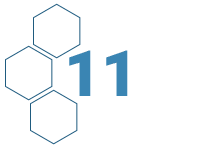
Institutional and Workforce Chapters: Providing a Capable and Diverse Workforce
Government transportation agencies confront huge challenges and tight budgets. Their ability to rise to these challenges depends on having capable workers with the tools they demand to practise their jobs.
These agencies take difficulty competing for and keeping talented workers. They simply cannot pay as much as private manufacture. How can officials concenter and retain the all-time employees despite the pay disparities between the public and private sectors?
Too, the changing nature of transportation is creating unlike requirements for the workforce. As a result, transportation organizations struggle to keep workers up to appointment in the skills they need. This problem is specially acute at the local government level in dealing with complex bug such as climatic change and revolutionary new transportation services. How do we address these challenges?
Automated trucks, trains, vessels, and shipping will disrupt the transportation workforce in both the public and individual sectors. What are the likely impacts of these technological changes on transportation jobs? What are the best means to help displaced workers?
With a growing, changing, and aging population, transportation organizations will demand to hire new and diverse employees. How tin managers concenter more members of underrepresented racial and ethnic groups into the transportation field? How can they minimize the loss of expertise and feel when Baby Boomers retire?

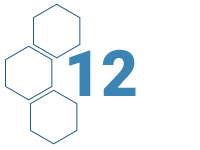
Research and Innovation: Preparing for the Future
America is known for innovation. Our discovery and encompass of the new is fueled in large role by public investments in educational activity and research. The revolutionary breakthroughs in transportation-related technology happened considering of decades of public spending on basic research.
In addition, steady improvements in the design, construction, operation, and direction of transportation infrastructures accept been spurred by research funded by government agencies. Public funding for inquiry and education has never been more than important, nor more uncertain.
Many experiments are taking place in transportation across the country to meet the challenges of technological innovation and climate change. How do nosotros record, evaluate, and share the results of these experiences and adopt innovations more apace into standards and practices?
Demands on transportation are growing every bit public spending on transportation research is declining. At the aforementioned time, public officials are oftentimes discouraged from taking risks. How exercise nosotros encourage innovation in transportation agencies? How do we speed the stride of research to keep upward with the major challenges transportation faces?

Decision
Modern culture would non be possible without extensive, reliable transportation systems. Technology is poised to transform transportation and impact guild and the environment in ways we cannot fully predict but must be prepared to manage. In addition to coping with a technological revolution, nosotros also face up difficult questions nigh how to reduce transportation's greenhouse gas emissions; brand it more resilient, efficient, prophylactic, and equitable; and pay the staggering costs of doing so.
TRB framed what it thinks are the most important transportation questions to address in the next few years. It hopes this document will assistance spur and inform an urgently needed national debate almost the future of transportation and help researchers frame and inform choices about the most promising paths forward.
Join the argue. Analyze the options. Find new solutions. Our future depends on it. For a more than thorough discussion of these issues go to https://world wide web.nap.edu/download/25314.

Virtually THIS Study
Which Of The Following Is Not A Principal Issue In Service-encounter Design? Quizlet,
Source: https://nap.nationalacademies.org/resource/25314/criticalissues/
Posted by: cervantezglanking.blogspot.com


0 Response to "Which Of The Following Is Not A Principal Issue In Service-encounter Design? Quizlet"
Post a Comment